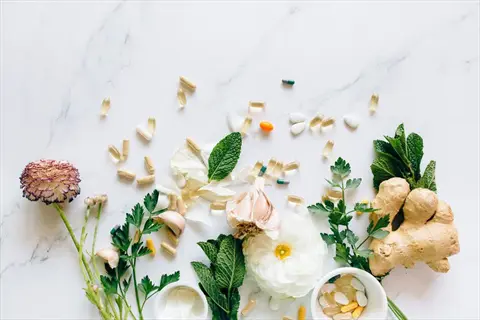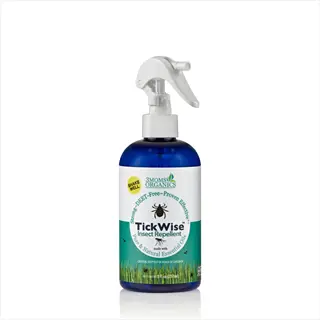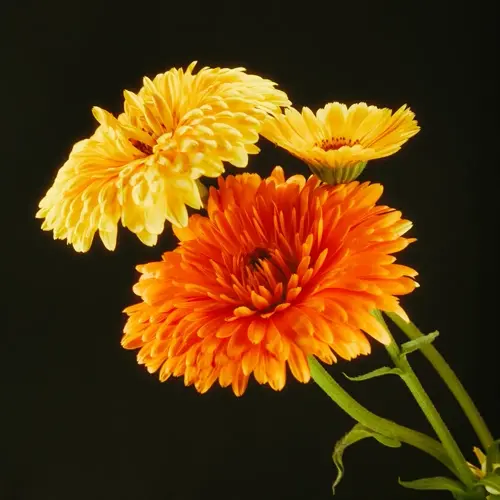How to Grow Catnip: The Complete Guide

Written by
Nguyen Minh
Reviewed by
Prof. Charles Hartman, Ph.D.Discover how to cultivate catnip in sunny areas with well-draining sandy soil.
Sow seeds after frost, in pots or raised beds, so you can manage it more easily.
And don't use fertilizer because the goal is to maintain maximum nepetalactone concentration when your cat enjoys it.
You'll want to harvest you catnip just as it's at its peak bloom and dry it properly so it's potent for your cat year round.
You can also use catnip as a natural pest control method, by planting it near your vegetable plants, you might be able to keep insects away!
Every week you can rotate their fresh or dried catnip toys to keep providing enrichment for your cats.
Article Navigation
Understanding how to grow catnip opens the door to a versatile horticultural staple. This plant offers more than just entertainment for cats! It provides natural pest control and delicious herbal tea. A great plant for beginners, it asks for minimal care.
Your adventure begins with seeds or seedlings. Catnip thrives in sunny areas with well-drained soil. Water when necessary, and refrain from using any fertilizer. Observe it develop quickly in the spring and up till the fall season. Pick leaves when the plant flowers.
You will enjoy a double reward growing and nurturing catnip. For gardeners, introducing fragrant greenery helps ward off insect pests. For pet owners, the dried leaves can be used to create entertaining toys for their furry companions. This easy-care herb has much to give both outdoors and inside your life.
Troubleshooting Common Issues
Leggy growth is overgrown stems that have tall, flimsy, and sparse leaves. This condition occurs when catnip is growing in an area that receives insufficient sunlight. Move plants to an area with 6 hours of direct sunlight every day. Pinch early and often for a bushier growth habit.
No scent = Poor drainage. Catnip demands sandy soil for efficacious amounts of essential oil. Mix 1 part coarse sand into 3 parts garden soil. This corrective measure will drastically increase scent strength in under a month.
Use chicken wire domes to keep enthusiastic cats off plants. Place barriers above seedlings with two-inch gaps. Bamboo stakes with three-inch gaps act as good support systems. These methods bypass broken stems without blocking sunlight.
To tackle pests such as whiteflies, treat your plants with organic methods. Before flowering, drench with 20 ml of neem oil per liter of water, once a week. Apply water only at the soil level to prevent powdery mildew. Every month, prune densely leafed stems for better air circulation.
Harvesting and Using Catnip
If you're planning to harvest some catnip, do so around mid-morning when flowering is at its peak. The essential oils are concentrated at their highest after the dew has evaporated. Using sharp shears, cut the stems just under the flower clusters. Doing this will ensure a high nepetalactone concentration. It will lead to a more potent product for your pets or teas.
Hang the stems upside down in a dark, well-ventilated area. Allow to dry for up to two weeks. With proper drying, nepetalactone levels are three times higher than those of fresh leaves. Do not use ovens or expose to sunlight to reduce the volatile oils. When dry, crumble leaves and store in airtight jars, away from heat sources.
Cats respond more intensely to dried leaves, as the concentrated oils are emitted quickly. Fresh catnip is the best option for reward-based training for carrier desensitization. Humans can use catnip to calm themselves or apply it topically. To relieve anxiety, steep 1 teaspoon dried leaves per cup.
Crushed fresh leaves can be applied to insect bites to reduce inflammation. You can brew some tea to help with post-meal digestive ailments. You can use herbal sachets for natural pest control in your pantry. This herb is multipurpose for health reasons; however, cats also enjoy it.

For Cats
- Behavioral enrichment: Sprinkle dried leaves on scratching posts to encourage natural play behaviors and reduce furniture damage
- Toy stuffing: Fill fabric toys with 1-2 teaspoons (5-10 g) dried leaves to stimulate hunting instincts during interactive sessions
- Training aid: Use fresh leaves as positive reinforcement during leash training or carrier acclimation exercises

For Humans
- Herbal infusion: Steep 1 teaspoon (2 g) dried leaves in 8 oz (237 mL) hot water for 5-7 minutes to create calming nighttime tea
- Culinary accent: Add fresh petals to salads or desserts as edible garnish providing subtle minty flavor enhancement
- Anxiety relief: Consume tea 1 hour before bedtime to reduce mild stress symptoms
- Natural repellent: Place dried sachets in pantries or closets to deter insects like ants and cockroaches without chemicals

Feline Enrichment
- Behavioral stimulation: Sprinkle 1 teaspoon (5 g) dried leaves on scratching posts daily to encourage natural play behaviors and prevent furniture damage
- Interactive toys: Fill fabric mice or balls with 2 teaspoons (10 g) dried leaves to stimulate hunting instincts during 15-minute play sessions
- Training reinforcement: Use fresh leaves as positive rewards during carrier training exercises lasting 10-15 minutes

Human Beverages
- Calming infusion: Steep 1 teaspoon (2 g) dried leaves in 8 oz (237 mL) water heated to 195°F (90°C) for 7 minutes to create anxiety-reducing nighttime tea
- Digestive aid: Consume 1 cup (237 mL) catnip tea 30 minutes after meals to alleviate mild stomach discomfort and bloating symptoms
- Sleep support: Drink tea consistently for 2 weeks before bedtime to establish natural sleep cycle improvements

Culinary Uses
- Salad enhancement: Add 1 tablespoon (3 g) fresh petals to green salads for subtle minty flavor and decorative edible garnish effects
- Dessert infusion: Steep fresh leaves in cream at 150°F (65°C) for 15 minutes to create uniquely flavored ice cream or custard bases
- Cocktail ingredient: Muddle 5-6 fresh leaves with citrus in cocktail shakers for herbal mocktails or alcoholic beverages

Medicinal Remedies
- Headache compress: Apply cooled catnip tea bags to temples for 15 minutes to relieve tension headache symptoms without medication
- Insect bite relief: Crush fresh leaves into paste and apply to mosquito bites to reduce itching and inflammation within minutes
- Respiratory support: Inhale steam from hot catnip tea to clear nasal congestion during colds or allergy seasons

Household Applications
- Pantry protection: Place dried sachets containing 1/4 cup (15 g) leaves in grain containers to repel weevils and moths organically
- Garden pest control: Spray cooled catnip tea around vegetable gardens weekly to deter aphids, squash bugs, and Japanese beetles
- Rodent deterrent: Scatter dried stems along basement walls to discourage mice infestations without toxic chemicals
Planting and Growing Basics
In colder areas, catnip requires full sun, but during temperatures above 85°F, it prefers afternoon shade. Planting can be done in southern regions to get morning sun and protection from the heat. For northern areas, you can maximize sun exposure and grow a nice, robust catnip plant.
Start with soil that has good or excellent drainage as a priority. Test your drainage by digging a one-foot deep hole and filling it with water. Good soil will drain diluted within the hour. For clay soil, amendment with coarse sand is needed to reach this crucial condition.
Using containers is best for small areas and your cats. Ground planting is best suited for large gardens, but it comes with the added task of weeding. Raised bed planting has the best drainage control for wet locations. The best spacing is always two feet; having room for air circulation is vital for healthy plants.
Completely avoid using chemical fertilizers. Research indicates that chemical fertilizers reduce nepetalactone concentration by 40%. Instead, use compost mixed into the soil at the time of planting. This will attract strong aromatic chamomile cats and support the natural growth of the plant.
Sunlight Needs
- Full sun requirement: Minimum 6 hours direct sunlight daily for optimal growth and oil production
- Hot climate adjustment: Provide afternoon shade when temperatures exceed 85°F (30°C) to prevent stress
- Indoor compensation: Rotate containers weekly or supplement with grow lights for 12-14 hours daily
Soil Preparation
- Drainage priority: Ensure water drains within 1 hour by testing with 12-inch (30 cm) hole filled with water
- Sandy soil advantage: Mix 30% coarse sand into clay soils to enhance drainage and aroma potency
- pH level range: Maintain soil between 6.1-7.8 pH using lime (to raise) or sulfur (to lower) based on test results
Planting Timeline
- Spring planting: Sow seeds or transplant 2 weeks after last frost when soil reaches 55°F (13°C)
- Fall planting: Direct sow 8 weeks before first frost for perennial establishment in zones 3-7
- Succession planting: Stagger plantings every 4 weeks for continuous harvest in frost-free regions
Watering Requirements
- Seedling care: Keep soil lightly moist but not waterlogged during first 3 weeks after germination
- Mature plants: Water deeply only when top 2 inches (5 cm) of soil are completely dry during droughts
- Container watering: Check moisture daily; provide 1 cup (237 mL) water per 6-inch (15 cm) pot when dry
Nutrient Management
- Fertilizer avoidance: Chemical nutrients reduce nepetalactone concentration by up to 40% in leaves
- Compost alternative: Mix 2 inches (5 cm) of aged compost into soil at planting for slow-release nutrition
- Potency preservation: Avoid all synthetic fertilizers to maintain maximum scent and flavor quality
Benefits of Growing Catnip
Catnip provides unique feline enrichment - beyond playtime. It alleviates anxieties during trips to the vet or travel. Fresh leaves can be used as a training reward for carrier acceptance. Dried versions can motivate your cat to exhibit natural hunting behaviors with interactive toys. These activities foster healthier routines.
This plant has strong pest control benefits. Plant it close to tomato plants to attract now them, repelling whiteflies and aphids. Crushed leaves deter mosquitoes as effectively as many synthetic sprays. Dried stems in the corners of a pantry can chase away invading ants. With these natural deterrents, both gardens and homes have been protected from pests.
Humans can gain medicinal benefits from catnip. Make tea to settle an upset stomach after meals. Drink a cup every night to calm anxiety and increase your sleep quality. Apply cooled tea bags to relieve headaches or skin irritation. These ways of using nature's pharmacy are effective.
Your garden ecosystem flourishes when catnip grows. Flowers attract bees, butterflies, and other pollinators, resulting in improved pollination. Deep root systems naturally aerate compacted soil. Companion planting with roses significantly reduces the likelihood of pest damage and creates a more favorable growing environment for all plants.
Feline Enrichment
- Behavioral stimulation: Many cats exhibit playful responses to nepetalactone, potentially reducing destructive behaviors through natural hunting simulations
- Stress reduction: Sniffing dried leaves may help lower anxiety during stressful events like vet visits
- Training enhancement: Fresh leaves can serve as positive reinforcement for carrier acclimation exercises
Natural Pest Control
- Mosquito repellency: Nepetalactone provides plant-based mosquito protection as a natural alternative
- Garden protection: Planting near vegetables may help repel aphids, squash bugs, and Japanese beetles
- Rodent deterrent: Dried stems in basements could discourage mice infestations by masking scent trails
Human Wellness
- Anxiety relief: Consuming 1 cup (237 mL) catnip tea daily may help reduce mild stress symptoms
- Digestive aid: Tea consumption after meals might alleviate bloating and cramping for some individuals
- Sleep support: Drinking tea 1 hour before bed could support improved sleep patterns
Garden Ecosystem
- Pollinator attraction: Flower clusters often draw bees and butterflies, potentially increasing garden yields
- Companion benefits: Planting near roses may reduce aphid issues while complementing coneflower growth
- Soil improvement: Deep roots can help aerate compacted soil and add organic matter when decomposed
Culinary Uses
- Flavor enhancement: Fresh petals add subtle minty notes to salads and desserts without overpowering
- Infusion versatility: Steeping leaves in cream or syrup creates unique bases for frozen treats
- Tea alternative: Caffeine-free infusion offers a relaxing beverage option for evening consumption
5 Common Myths
Cats universally react to catnip which makes it popular with cat owners.
Genetics determine whether any one cat is affected by nepetalactone - the active compound in catnip. Approximately half of all cats possess the genetic trait to respond to nepetalactone in catnip. Affected cats can display different reactions from rolling around and playing more intensely to uninterested with no reaction outside of normal behavior. Kittens under three months old typically don't react to catnip at all, and genetic predisposition doesn't guarantee sensitivity in geriatric cats either, sensitivity doesn't develop until maturity.
Fertilizing catnip plants will boost their aroma and make them more attractive to cats.
Chemical fertilizers will actually reduce the potency of essential oils like nepetalactone within catnip leaves, which reduces the plant's natural aroma and effectiveness. Catnip will produce the strongest aroma when grown in moderately fertile soil with only compost as an amendment. When exposed to synthetic nutrients, the biochemistry of the plant favors growth of the plant over oil production resulting in larger leaves that are less potent and not as attractive to the cats.
Catnip is highly invasive in all locations and can easily overtake a garden.
Although catnip spreads very easily through self-seeding and underground runners when conditions are good, it is considered officially invasive only in a few states like Maryland and West Virginia. Gardeners can prevent catnip from growing out of control by deadheading the flowers before any seed formation occurs and growing catnip in containers or raised beds. Keeping an eye on, and pulling unwanted seedlings in the spring, keeps the plant from becoming uncontrolled without the use of chemicals.
Dried catnip loses its effectiveness after a few weeks so new supplies are often required for their cats.
Properly dried catnip needs to be hung and stored in your choice of a dark, dry area with appropriate air circulation for 2-3 weeks, crumbled leaves, stored in airtight containers, and away from light and heat and dry catnip should stay effective for 6-12 months. The drying process actually concentrates the nepetalactone oils at first, and then sealed storage keeps these oils from degrading, which will happen if exposed to humidity and sunlight.
Catnip and catmint are the same plants, and the two can be used interchangeably.
While both plants belong to the mint family, catnip (Nepeta cataria) has square stems, heart-shaped leaves, and white flowers with purple spots that will produce a chemical called nepetalactone to attract cats. Catmint (often known as Nepeta mussinii) has more ornamental value, and it has lavender-blue flowers. It also tends to be more bushy, and it produces tiny amounts of nepetalactone. Catmint is better suited for landscaping purposes, and catnip is better suited for enriching cats and making herbal items.
Conclusion
Cultivating catnip provides double value for your yard and your pet's life. Catnip is a great form of biological pest control and cat enrichment. You receive the value of several services for the care and maintenance of just one herb. Catnip creates an extraordinary garden ecosystem.
Easiest success with planting containers. Start with a ten-inch pot placed on a warm windowsill. Water only when the soil is completely dry. This will help build confidence as a beginner before transferring to garden beds. Containers are also a great way to keep plants out of reach of kittens that love to play with them.
Cutting plants back to four inches before the first winter frost and applying straw mulch around the root zones in colder regions will help the plants establish themselves before winter. Followed by removing mulch when spring growth emerges. This act of seasonal maintenance will help perennially planted perennials return to their original vigor every year. Protect your plants in containers from extreme temperatures.
Watching bees dance on summer flowers is a delightful experience. Creating homemade cat toys from dried flowers is a enjoyable activity. Enjoy sipping herbal tea from your garden. Any amount of catnip makes gardening worthwhile by providing such easy-to-enjoy rewards. Begin your adventure of growing today for long-lasting gains!
External Sources
Frequently Asked Questions
Is catnip easy to grow?
Yes, catnip is beginner-friendly when planted in full sun locations with well-draining soil. It requires minimal watering and no fertilizers, thriving in containers or gardens across most climate zones.
Does catnip come back each year?
Catnip is a perennial plant returning annually in zones 3-9. In colder regions, protect roots with mulch. Divide mature plants every three years to maintain vigorous growth and optimal aroma production.
How do I grow catnip indoors?
Use 10-12 inch pots with drainage holes and sandy soil. Place near south-facing windows or under grow lights for 12+ hours daily. Water only when the top soil layer becomes completely dry to the touch.
What do vets think of catnip?
Veterinarians consider catnip safe for feline enrichment when used moderately. It provides behavioral stimulation without addiction risks. Monitor cats during initial exposure to ensure positive reactions without overstimulation.
Should I let catnip flower?
Flowering enhances pollinator attraction but reduces leaf potency. For harvesting, trim flowers early. If collecting seeds or supporting wildlife, allow blooms while ensuring controlled spreading through deadheading.
How to make catnip grow bushy?
Pinch stem tips regularly during early growth. Ensure six hours of direct sunlight daily and avoid overcrowding. Prune leggy stems to redirect energy into lateral branching.
What part of catnip is used for tea?
Harvest leaves and flowers during peak flowering for tea. Dry them upside-down in darkness, then crumble. Use one teaspoon per cup of hot water for herbal infusion.
Does catnip attract pests?
While repelling mosquitoes and rodents, catnip may attract aphids. Companion plant with lavender for natural control. Indoor plants might develop whiteflies; treat with neem oil sprays.
Can humans consume catnip safely?
Yes, as caffeine-free herbal tea. It may aid digestion and relaxation. Avoid medicinal doses during pregnancy. Smoking catnip is not recommended due to limited safety research.
How often should catnip be watered?
Water mature plants only when the topsoil dries completely. Seedlings need light moisture. In containers, check soil daily during heat. Overwatering causes root rot and reduces scent potency.

